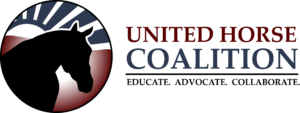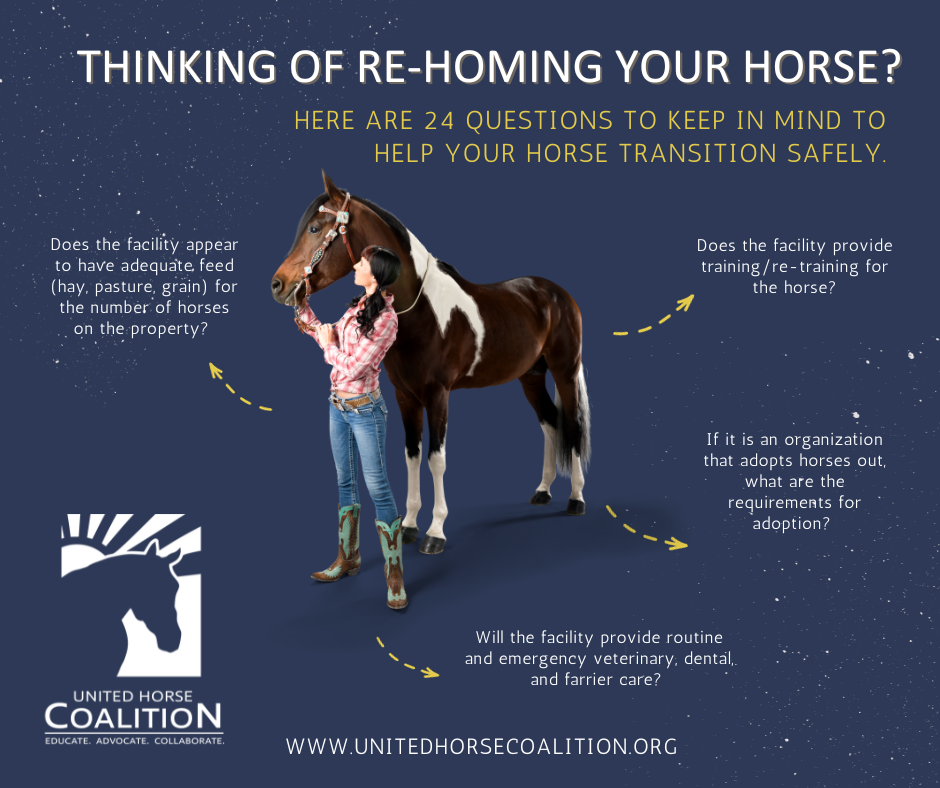Rehoming Done Right: How to Start the Process Early and Responsibly
By the United Horse Coalition
There may come a time in many horse owners’ lives when circumstances change—whether due to health, financial strain, life transitions, or evolving riding goals—and they begin to consider new options for their horse’s future. These decisions are never easy, and the emotional weight that comes with them is significant. In many cases, the horse is deeply loved, and the desire to do what’s best for them remains front and center.
It’s important to understand that needing to rehome a horse does not mean the animal has been neglected or mistreated. In fact, the majority of horses entering shelters come from responsible owners who are proactively seeking help.
According to the Equine Welfare Data Collective’s 2019 report, 52% of horses entering shelters did so through owner surrender—77% of those due to personal financial or health-related reasons.
Reaching out for assistance should never be seen as a failure. Rather, it is a responsible and commendable step toward ensuring the long-term well-being of the horse. Many rescues and organizations actually prefer to work with owners before a situation becomes critical. The earlier the conversation begins, the more options are typically available.
Because it can sometimes take time to find an appropriate placement, especially for older horses, those with special needs, or those requiring specific types of homes, starting the process early is essential. Whether you’re exploring sale, retirement placement, or rehoming options through a rescue or sanctuary, allowing time for the right opportunity to arise can make all the difference.
If your goal is to keep your horse but you’re temporarily struggling, be sure to explore the safety net resources available in the United Horse Coalition’s Equine Resource Database, which are designed to help owners during times of hardship.
Regardless of the path you choose, the ultimate goal is to ensure your horse’s continued care, safety, and happiness. Being transparent about your horse’s needs, abilities, and health status is not only a legal responsibility in many cases but also the best way to help them transition into a successful next chapter.
Whether you’re searching for a new rider, a retirement facility, or a rescue partner, remember that you’re not alone. The United Horse Coalition is here to support you—and your horse—every step of the way.
In most cases, there are four options available to owners who need to rehome their horse:
- Sale
- Donation/gift
- Re-homing to a rescue/sanctuary
- Euthanasia
The options available to you may be based on the health, soundness, age, training level, and temperament of your horse. Some options have strict criteria for qualification; not every horse is suitable for every job. For more information, please read our article on Responsible Placement Options.
In order to ensure that your horse is placed within the best-suited organization, please consider asking the organization(s) the following:
- Does the organization subscribe to accepted guidelines for operating such facilities, such as the “Care Guidelines for Rescue and Retirement Facilities” prepared by the American Association of Equine Practitioners?
- For Thoroughbreds, is the organization accredited by the Thoroughbred Aftercare Alliance?
- Is it an entity exempt from federal tax under Section 501(c)(3) of the Internal Revenue Code?
- Does it file IRS Form 990 and forms required by the state? Will the facility provide copies?
- Does it have a mission statement and a board of directors? Who are they?
- How long has the organization been operating?
- If it is a facility that will use the horse, how will it be used?
- Will the facility allow you to walk the property, including entering barns?
- Does the facility appear to have adequate feed (hay, pasture, grain) for the number of horses on the property?
- What are the physical characteristics of the facility, including barns, pastures, shelters, and fencing? Does the facility have ample room for horses to graze and/or move about? Do the horses have adequate shelter?
- Is the organization’s agreement with the owner for free lease or donation or something else?
- Will the horse stay at the facility or be placed into foster care? If the facility uses foster care, how are foster homes screened?
- Does the organization have an agreement regarding the use, boarding, or care of the horse?
- If it is an organization that adopts horses out, what are the requirements for adoption? Does the facility follow up with the new owners to ensure the horse is being properly cared for?
- Does the organization have a policy against breeding or restrict the horse’s use in any way?
- What is the organization’s post-adoption policy on breeding and use?
- If this is an adoption facility, are stallions gelded upon entry and before adoption?
- What becomes of the horse when the adopter or the user no longer wants the horse?
- Will the organization automatically take the horse back?
- Will the organization advise you before your horse is transferred to a new owner?
- Can the original owner ask for the horse back?
- Will the facility provide routine and emergency veterinary, dental, and farrier care?
- Does the facility provide training/re-training for the horse?
- Can owners visit their horse at the facility?
- Can owners visit the horse at an adoption home?
- Have any welfare charges been brought against the organization?
- Does the facility euthanize horses that cannot be placed? If so, will the facility notify the owner beforehand?
For more information on acquiring assistance, contact the United Horse Coalition.













